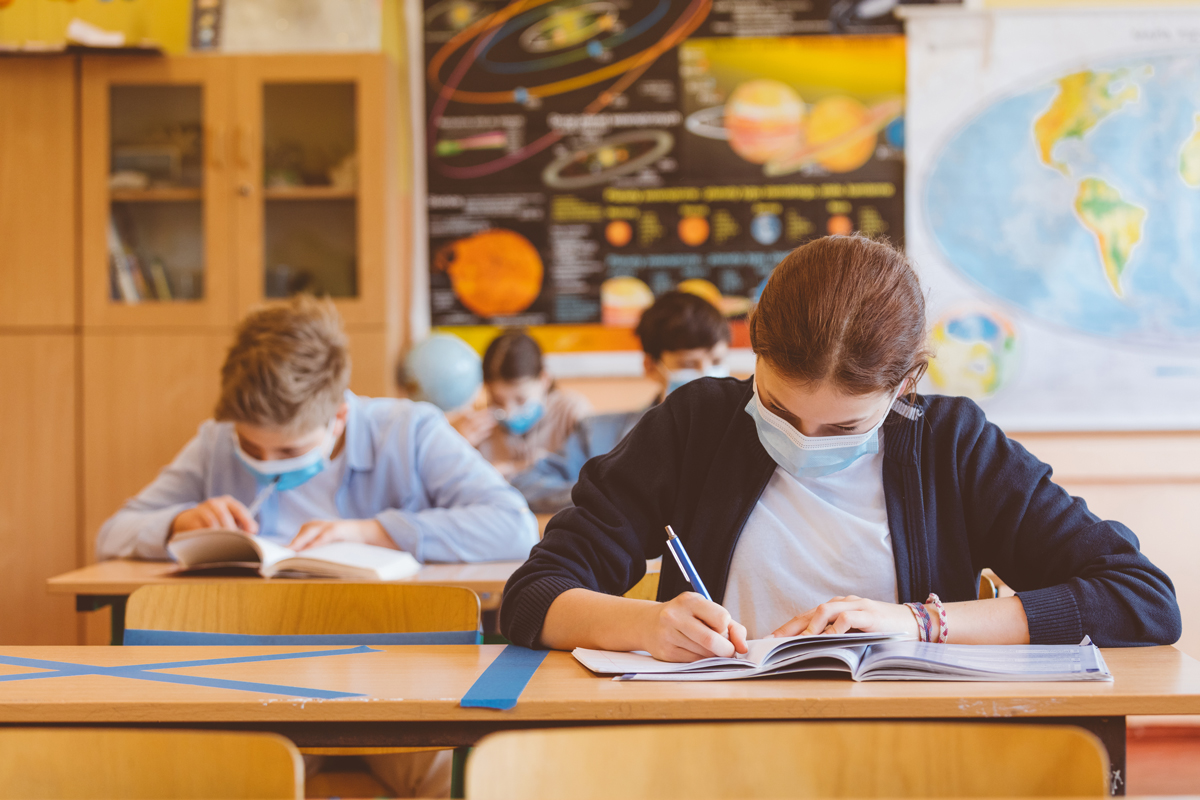The California Department of Public Health today released updated COVID-19 guidance for K-12 schools. Like guidance released last week from the Centers for Disease Control and Prevention, the foundational principle of the CDPH guidance is that all students should have access to safe and full-time, in-person instruction at the start of the 2021–22 and that practices should be designed to minimize any missed days throughout the year. While the CDPH guidance adheres in most ways to the CDC’s, one major difference is apparent in the rules for masking.
Since physical distancing is not possible in many facilities, CDPH is requiring universal masking while indoors in all K-12 schools, noting that “masks are one of the most effective and simplest safety mitigation layers to prevent in-school transmission of COVID-19 infections and to support full-time in-person instruction.” Outdoor mask use is optional. CDPH expects that the mask mandate will help facilitate full-time, in-person instruction by encouraging parents wary of the health risks to send their children to school and by reducing the number of days lost to sickness. The state also mentioned that, in crafting the guidance, it strived for “simplicity” because a range of masking rules for different situations can create confusion and complicate enforcement.
Ben Chida, chief deputy cabinet secretary for Gov. Gavin Newsom, summarized the approach of the new guidance as “cutting through the noise.”
“We’re conforming to CDC, [which] has a menu of different things to do — we want to make it as easy as possible for California school administrators, staff, labor partners and others to understand the path in terms of having in-person instruction,” Chida said. “We think that easily implemented and effective measures like masking are a far better option than other, harder-to-implement options. In terms of the cultural and political disputes that arise, part of what we’re trying to do is absorb as much of the impact as possible at the state level so that it’s not a local fight.”
Dr. Naomi Bardach, the Safe Schools for All Team state lead, also emphasized the complications of differentiating between students who are vaccinated or not, and the social stigma that may come with that. “If there’s an allowance for differentiation between two classes of students in a school — masked and unmasked, vaccinated and unvaccinated — that’s going to be very hard,” Bardach said. “It’s hard to monitor, it’s hard to enforce, it’s hard to figure out who is and isn’t vaccinated — and it can become very detrimental if it becomes contentious, where some kids are masked and others aren’t and there is bullying or stigma.”
Changes to quarantine requirements
In a briefing prior to the release of the guidance, Dr. Bardach said schools can take advantage of a less-strict quarantine period for unvaccinated students if universal masking is in the school policy. According to the guidance, when both the exposed party and the infected person were wearing a mask in the indoor classroom setting, unvaccinated students — even those in who were in close contact with the infected person (more than 15 minutes over a 24-hour period within 0-6 feet indoors) — may undergo a modified 10-day quarantine and continue to attend school if they:
- are asymptomatic;
- continue to appropriately mask, as required;
- undergo at least twice weekly testing during the 10-day quarantine; and
- continue to quarantine for all extracurricular activities at school, including sports, and activities within the community setting.
Quarantine recommendations for unvaccinated close contacts who were not wearing masks during an indoor exposure is still 14 days. However, those unvaccinated contacts that remain asymptomatic may discontinue self-quarantine under the following conditions:
- quarantine can end after 10 days from the last exposure without testing; OR
- quarantine can end after seven days if a negative test is received after day five from the date of the exposure.
The guidance also notes that asymptomatic close contacts must continue to self-monitor for symptoms through day 14 from last known exposure and follow all recommended mitigation strategies.
Other adjustments
Cleaning
The guidance updates cleaning recommendations to indicate that once-a-day cleaning is “usually enough to sufficiently remove potential virus that may be on a surface.” If a facility has had a person with COVID-19 in it within the last 24 hours, the guidance recommends cleaning and disinfecting the spaces occupied by the person during that time.
Food service
The guidance continues to recommend that physical distance between people is maximized as much as possible while eating and that eating outdoors should be done as much as feasible. Frequently touched surfaces should be cleaned regularly, but “there is no need to limit food service approaches to single use items and packaged meals.”
Band, drama and youth sports
During the briefing, Dr. Bardach stated that CDPH will release a separate guidance on band, drama and youth sports. She did not give a date by when that guidance may be expected.




